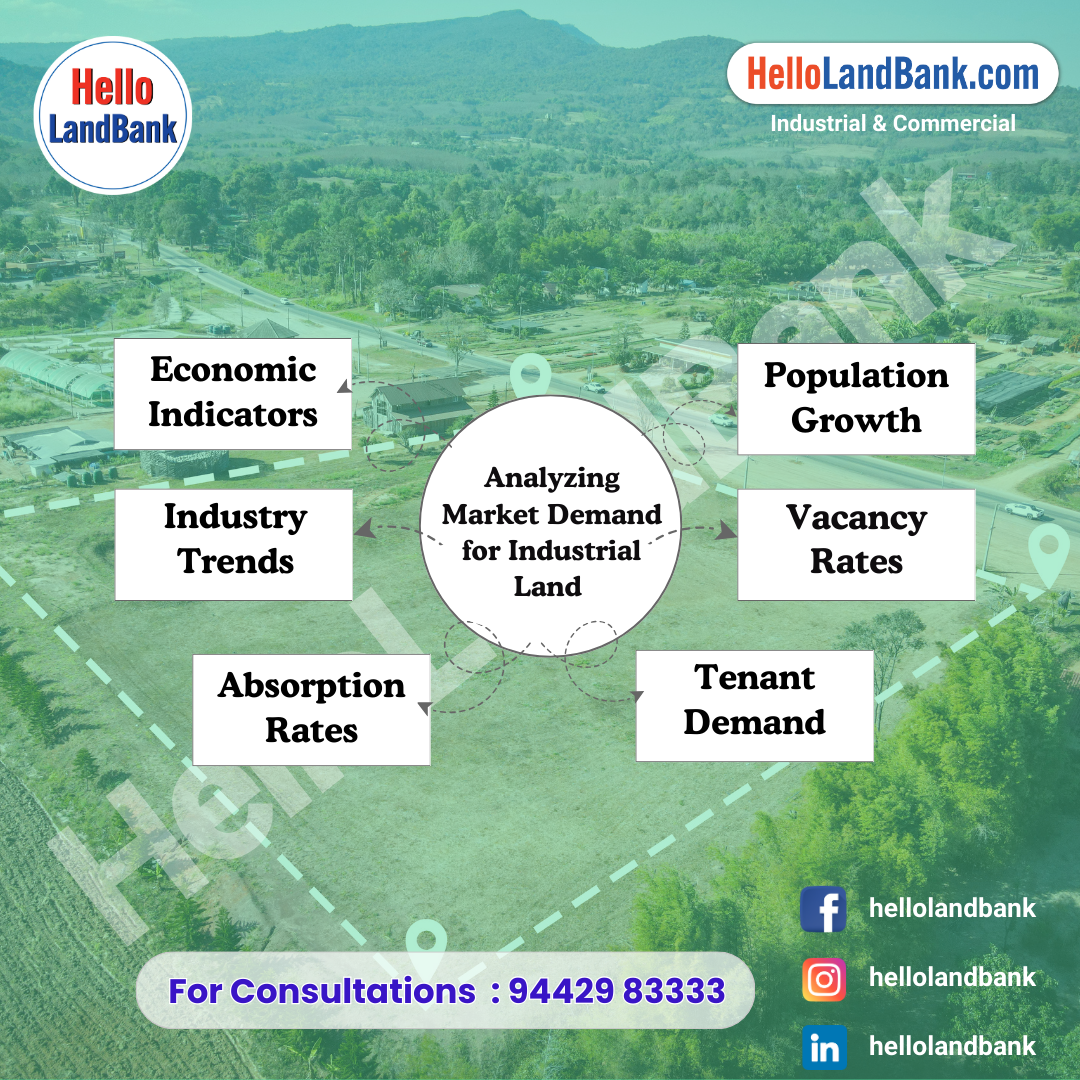Analyzing market demand for industrial land involves assessing various factors that influence the need for industrial space in a particular market. Here’s how you can analyze market demand for industrial land:
1. Economic Indicators:
- Monitor key economic indicators such as gross domestic product (GDP) growth, employment rates, manufacturing output, and consumer spending. Strong economic growth often correlates with increased demand for industrial space as businesses expand operations and require more warehouse, distribution, and manufacturing facilities.
2. Population Growth:
- Analyze population growth trends in the local market area, as population growth drives demand for goods and services, leading to increased demand for industrial space to support distribution, logistics, and retail activities.
3. Industry Trends:
- Identify industry sectors driving demand for industrial space in the market, such as e-commerce, logistics, manufacturing, and distribution. Research industry growth projections, supply chain trends, and technological advancements influencing industrial real estate demand.
4. Vacancy Rates:
- Evaluate vacancy rates in the industrial real estate market to assess the balance between supply and demand. Declining vacancy rates indicate strong demand for industrial space, while increasing vacancy rates may signal oversupply and weaker demand.
5. Absorption Rates:
- Measure absorption rates, which represent the rate at which available industrial space is leased or sold within a specific period. Positive
absorption indicates healthy demand and market activity, while negative absorption suggests weakening demand and potential oversupply.
6. Tenant Demand:
- Gauge tenant demand by monitoring leasing activity, tenant expansions, and relocation trends in the market. Pay attention to tenant requirements, preferences, and space needs to identify emerging demand drivers and opportunities.
7. Development Pipeline:
- Assess the pipeline of new industrial development projects and construction activity in the market. Analyze planned and under-construction projects, development permits, and pre-leasing activity to anticipate future supply additions and potential impacts on market dynamics.
8. Infrastructure Investments:
- Consider infrastructure investments, transportation networks, and logistics infrastructure enhancements that could impact industrial land demand. Proximity to highways, ports, airports, and railroads can influence location preferences and market demand for industrial properties.
9. Market Surveys and Reports:
- Utilize market surveys, research reports, and industry publications to gather insights into market demand dynamics, leasing trends, rental rates, and tenant preferences. Leverage data from reputable sources to support market analysis and decision-making.
10. Local Market Knowledge:
- Leverage local market knowledge and insights from real estate professionals, brokers, developers, and economic development agencies familiar with the industrial real estate market. Engage with industry stakeholders to gain firsthand information and perspectives on market demand drivers and trends.
By conducting comprehensive market analysis and monitoring key demand drivers, investors can gain valuable insights into market demand for industrial land and make informed investment decisions aligned with market dynamics and opportunities.




